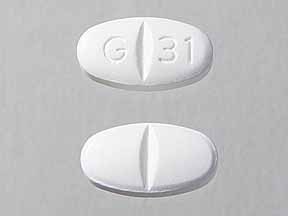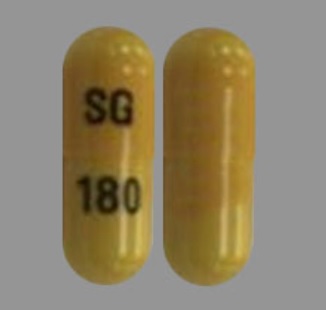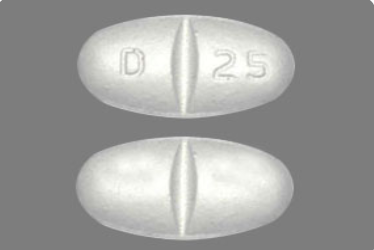Gabapentin is an FDA-approved medication for a few specific conditions, but it’s prescribed off-label for a wide variety of disorders due to its unique mechanism and favorable safety profile.
Below is a detailed and comprehensive guide to the off-label uses of gabapentin, including mechanisms, clinical rationale, and relevant research where applicable.
🔹 FDA-Approved Indications
Before diving into off-label uses, here’s a recap of approved uses:
- Postherpetic neuralgia (PHN) – nerve pain following shingles
- Partial seizures (as adjunct therapy)
🔹 Major Off-Label Uses of Gabapentin
1. Neuropathic Pain (Non-PHN)
Examples:
- Diabetic peripheral neuropathy
- HIV-associated neuropathy
- Chemotherapy-induced peripheral neuropathy
- Sciatica, radiculopathy
Mechanism:
Gabapentin binds to the alpha-2-delta subunit of voltage-gated calcium channels, reducing excitatory neurotransmitter release.
Evidence:
- Widely used in pain management guidelines.
- Cochrane reviews support its modest-to-good efficacy in various neuropathies.

2. Fibromyalgia
Rationale:
Fibromyalgia involves central sensitization and abnormal pain processing—gabapentin reduces neuronal excitability.
Comparison:
- Pregabalin is FDA-approved for fibromyalgia, but gabapentin is often used off-label due to similar mechanisms and lower cost.
3. Migraine Prophylaxis
Indications:
- Chronic migraine
- Menstrual migraine
- Occipital neuralgia
Evidence:
- Some studies support modest benefits; others show limited efficacy.
- Usually considered when other migraine preventatives (e.g., beta-blockers, topiramate) fail.

4. Generalized Anxiety Disorder (GAD)
Rationale:
Gabapentin modulates GABAergic tone and calms overexcited neurons, leading to anxiolytic effects.
Populations:
- Especially used in patients with substance use disorders, where benzodiazepines are contraindicated.
Evidence:
- Clinical trials and psychiatric practice support efficacy in mild to moderate GAD and social anxiety.
5. Alcohol Use Disorder (AUD)
Use Cases:
- To reduce cravings
- To treat withdrawal symptoms
- To maintain abstinence
Mechanism:
Normalizes GABA and glutamate imbalance seen in alcohol dependence.
Evidence:
- Randomized trials (e.g., Mason et al., 2014) show benefit for abstinence and relapse prevention.
- American Psychiatric Association includes gabapentin as an option in AUD management.
6. Restless Legs Syndrome (RLS)
Rationale:
Alleviates abnormal sensations and improves sleep latency.
Comparison:
- Gabapentin enacarbil (a prodrug) is FDA-approved for RLS, but gabapentin IR/ER is frequently used off-label.
7. Insomnia
Use:
- Especially secondary insomnia related to pain, anxiety, or restless legs.
- Increases slow-wave (deep) sleep.
Preferred Populations:
- Elderly
- Patients with substance abuse history
- Patients with neuropathic pain + insomnia
8. Bipolar Disorder (Adjunctive)
Evidence:
- Used as adjunct in bipolar depression or anxiety.
- Limited evidence for monotherapy.
- Not first-line, but can be useful in treatment-resistant or comorbid anxiety cases.
9. Hot Flashes (Vasomotor Symptoms)
Population:
- Postmenopausal women
- Breast cancer survivors (e.g., on tamoxifen)
Mechanism:
May act on hypothalamic thermoregulatory centers.
Evidence:
- Gabapentin 900 mg/day shown to reduce hot flash frequency and severity.
10. Trigeminal Neuralgia / Facial Neuralgias
Use:
- When carbamazepine is poorly tolerated or contraindicated.
- Used in atypical facial pain as well.
11. Chronic Cough (Neuropathic Cough)
Context:
- Refractory cough of neurogenic origin, unresponsive to antitussives.
Mechanism:
Gabapentin desensitizes afferent nerves in the larynx.
Evidence:
- Trials have shown reduced cough frequency and severity.
12. Pruritus (Itch)
Types:
- Uremic pruritus (dialysis patients)
- Cholestatic pruritus
- Neuropathic itch
Rationale:
Stabilizes abnormal sensory input in nerve fibers.
13. Tinnitus
Use:
- When associated with hyperacusis or nerve damage.
Effectiveness:
- Mixed evidence; sometimes used as part of multimodal treatment.
14. PTSD (Post-Traumatic Stress Disorder)
Benefit:
- Decreases nightmares, hyperarousal, and sleep disturbance.
- Used when first-line SSRIs or prazosin are inadequate.
15. Hiccups (Intractable)
Mechanism:
Acts on central pattern generators involved in hiccup reflex.
Evidence:
- Case reports and small studies.
🔹 Key Considerations
Dosing (off-label typical ranges):
-
- Neuropathic pain: 300–1800 mg/day in 3 divided doses
- Insomnia: 100–600 mg at night
- Anxiety: 300–900 mg/day
- Alcohol withdrawal: up to 1800 mg/day
Titration:
- Start low (e.g., 100–300 mg/day), increase gradually to reduce side effects like sedation or dizziness.
Common Side Effects:
-
- Drowsiness
- Dizziness
- Ataxia (poor coordination)
- Peripheral edema
- Weight gain
🔹 Summary Table of Off-Label Uses
| Condition | Evidence Level | Typical Dose Range | Notes |
|---|---|---|---|
| Neuropathic Pain | High | 300–1800 mg/day | First-line in guidelines |
| Fibromyalgia | Moderate | 900–2400 mg/day | Similar to pregabalin |
| Migraine Prophylaxis | Low-Moderate | 900–1800 mg/day | Not first-line |
| Generalized Anxiety Disorder | Moderate | 300–900 mg/day | Safer alternative to benzos |
| Alcohol Use Disorder | Moderate | 900–1800 mg/day | Reduces cravings, relapse |
| Insomnia | Moderate | 100–600 mg hs | Improves sleep quality |
| RLS | High | 300–900 mg hs | Gabapentin enacarbil is FDA-approved |
| Hot Flashes | Moderate | 900 mg/day | Non-hormonal alternative |
| PTSD | Low | 300–1200 mg/day | Adjunctive treatment |
| Chronic Cough | Low-Moderate | 900–1800 mg/day | For idiopathic or neurogenic cough |
